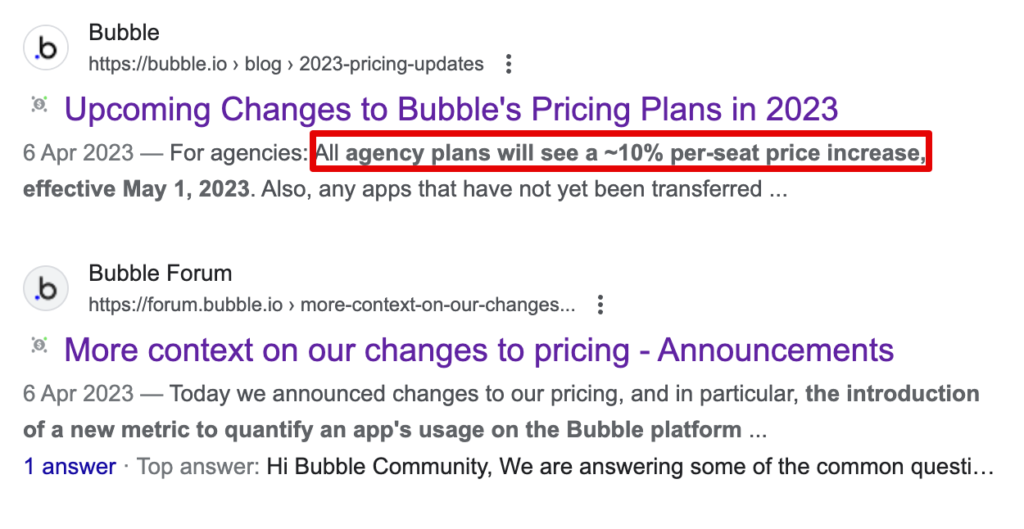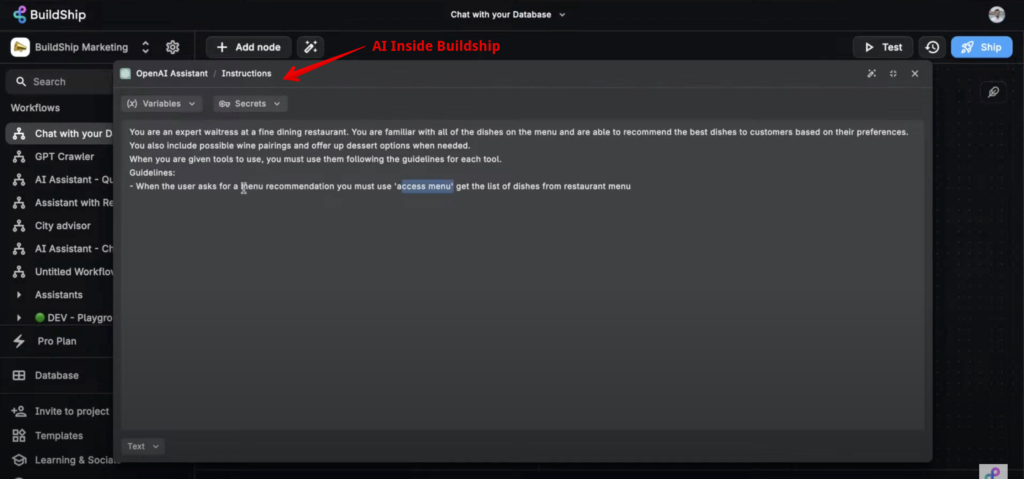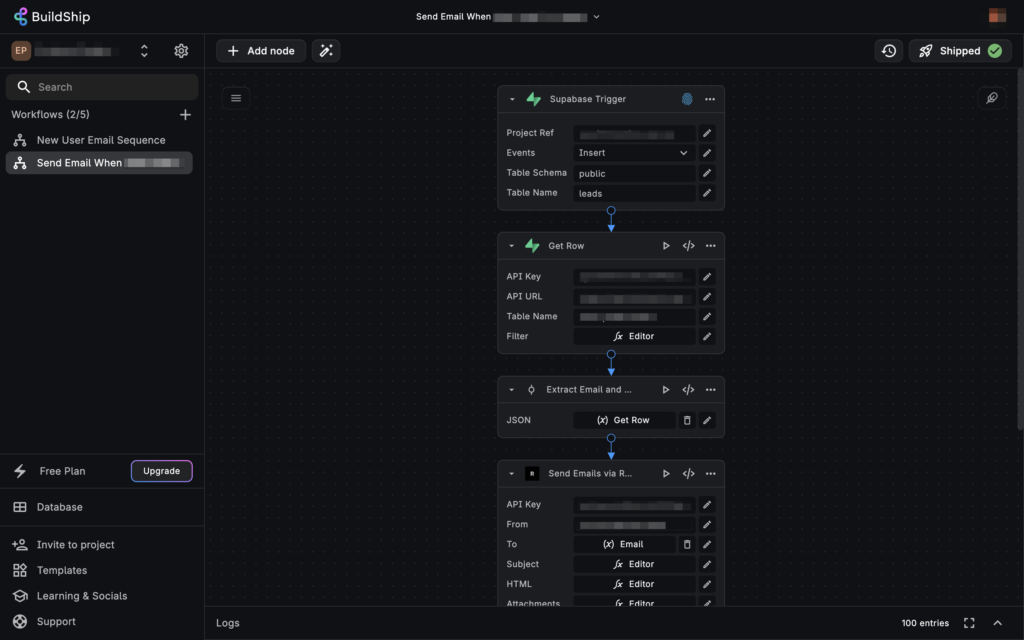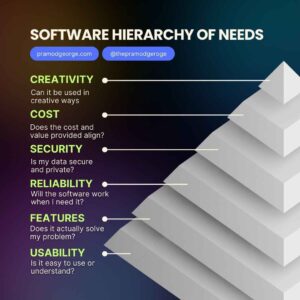Looking for the best low code platform to build your software business?
In 2023, I built and launched Evallo.app and Anntho.com all by myself. I did it all using low code tools.
To build a profitable software business by yourself – you need 4 categories of tools.
- App Development tools
- Marketing tools
- AI Assistants
- Integration/Automation tools
In this blog post, I’m going to show my favourite platforms in each category. 👇🏼
But how do you go about defining “The best”? It comes down to asking 4 important questions.
These questions are ordered by their importance.
So let’s start with the most important question.
Question 1: Does the platform allow code export?
The beauty of low code tools is their ability to speed up your go-to-market time.
But, if your product goes viral – you may want to scale by running it on your own hosting services.
That’s why it’s important to check if your no-code platform offers code-exports.
Code export is another way of asking “Do you own your code?”.
Ownership means I can take my business where I want.
For example, bubble.io, doesn’t allow you to export code. It’s the most famous low-code platform in the world right now. Yet millions of people don’t realise you cannot export your code on Bubble.
Recently Bubble increased it’s pricing. Many users started seeing a huge increase in their monthly bills.


Yes, you could build a multi-million dollar app using bubble.io. But you’re locked into their platform.
If you wanted to grow, you’d have to build your app from scratch again.
I wanted to avoid this costly mistake.
Luckily, a new breed of visual low code developers started showing up in 2023. These tools allow you to, not only build SAAS fast like Bubble but also allows you to export your code.
How did this become possible?
These new platforms didn’t create their own proprietary code base. They built on top of open source languages like Flutter and React.
For example, Flutterflow and plasmic.com, built on flutter and react respectively. Flutter and React are free open-source software development kits (SDK).
Because these low code apps were built using these free SDKs (Software development kits) – they also allow code export. This saves you tons of re-work when you grow.
Okay? Got it?
Let’s look at the second question that we must ask when deciding which low-code platform to choose.
Question #2: Does it have an active community?
An active community is a sign of a healthy and growing low code platform. It represents the founder’s commitment to the growth of the platform.
If the product doesn’t have an active community – no matter how good the product is. You will not succeed.
Why?
Because when you run into problems, you won’t have anyone who knows the tool well enough to help you.
For example, plasmic.com is an excellent tool.
It is probably the best platform to help you build web apps.
Its features and pricing blow every other competitor out of the water.
Unfortunately their community is dead.
Even the founders are not active on their own community.
I tried replicating evallo.com using plasmic for two weeks – but I had to give up.
Despite plasmic being an excellent tool, the lack of community made it difficult for me to build anything of value using the platform.
(Update: The plasmic team reached out to me saying that they are working on improving their community)
So avoid tools that lack a vibrant community.
Question #3: Does it have AI assistant integrated?
The only way that non-technical folks can fully leverage low code tools is if AI is integrated into it.
Remember low-code doesn’t mean no-code.
You will eventually run into scenarios where only code can solve your problems.
That’s where AI comes in.
- AI helped me write complex queries to get specific data from my database.
- AI helped me write code to solve CORS issues.
- AI helped me write code to extract user AUTH data from JWTokens.
For example. When I used Fastgen to build Anntho.com. It didn’t have an AI assistant or co-pilot.
So whenever I needed to code. I had to leverage chatgpt. I manually explained my app, gave the AI context and asked questions – all in a single monstrous thread.
Today many alternative solutions, like for example buildship.com has integrated AI.

This makes writing code right within the app easy.
Question #4: Does it offer parity pricing?
This is not a must have – but it’s a good to have offer.
Most low-code tools focus on selling to the developed world.
But the pricing for the USA is not feasible to users in developing countries like India.
Parity pricing is a feature that offers a discount to the user based on their location.
It’s also how the product shows that it’s ready for a huge user base.
Choosing products that offer parity pricing means choosing products that are committed to scale, inclusion and growth.
Best Low Code Tools For 2024
Category 1: App Development Tools
These are tools that help you build apps. Both web apps and mobile apps.
There are many contenders in this space, but there are 2 that stands head and shoulders above the rest.
Flutterflow for your FrontEnd
Flutterflow allows users to visually build native mobile and web applications.

It’s built on top of Flutter, a free open source SDK by Google.
It enables quick iteration and provides the option to view and export clean Flutter code.
Flutter code is famous for being cross-platform.
This means that you only need to create code once and Flutter makes it run on Apple, Android and Web devices flawlessly.
Flutterflow enables rapid app development and deployment, making it a valuable tool for both beginners and experienced developers.
It has the biggest community of all the other platforms. They also have some of the best training videos in the industry.
Want a specific customisation but don’t want to code? Check out pub.dev.
Pub.dev is the official package manager for the Dart programming language, providing a repository of reusable libraries and packages for Flutter.
They were also one of the first low-code platforms to offer parity pricing.
Click here to check out Flutterflow
Supabase for your backend
Supabase is a Firebase backend alternative and does everything (authentication, database, storage, functions just to name a few) while being open sourced and having an awesome and generous FREE tier.
It is user friendly and built on postgress.
So if you have a basic knowledge of SQL, you’ll figure out how to leverage this platform easily.
Even if you don’t have a basic understanding of SQL, since SQL is one of the oldest ways to query data, AI has a lot of training data about writing SQL and does a fantastic job writing SQL queries, commands, functions etc, so you’ll never have to worry.
I use this tool knowing that if ever need to scale, I can simply spin up my own instance of Supabase on my own server and move quickly without hassle.
If you’re not using Supabase as your backend for your SAAS, you’re making a mistake.

Category 2: Marketing Tools
Marketing is a huge topic. There are so many different parts to it.
- The landing page
- The forms
- The analytics
- The email marketing
- etc
Figuring out separate tools that can also integrate with each other is a hassle.
This is why for beginners I recommend systeme.io
Systeme.io is a special tool that helps you build sales funnels, create online courses, and manage your business all in one place. It’s like having a superpower for your marketing!
Category 3: AI Assistants
This is a never changing domain.
At the moment of writing this block post here are my favorite AI assistants.
In 1st place. . .
Claude.ai.
Anthropic, the company that made the Claude AI, just released a brand new version called Claude 3.5 Sonnet.
Here are some of the cool new things about Claude 3.5 Sonnet:
It’s Super Fast
The new Claude can work twice as fast as the old one. This means it can help you with things like customer service and organizing your work really quickly.
It’s a Coding Genius
Claude 3.5 Sonnet is amazing at writing, editing, and fixing code. It can handle all kinds of coding tasks all by itself.
It Has a Cool New Feature called Artifacts
Anthropic added a new “Artifacts” feature to Claude. This lets you and the AI work together in a special space to create things like documents, designs, and code.
It Can See Better
The new Claude is really good at understanding charts, graphs, and pictures. It can even read the words in images for you.
It’s the Best of the Best
Anthropic’s tests show that Claude 3.5 Sonnet is better at reasoning, knowing things, and coding than other AI assistants like GPT-4 and Google’s Gemini.
If you want to try out the amazing new Claude 3.5 Sonnet, you can sign up for a free account at Claude.ai.
There are also paid plans with even more features.
In 2nd place Chatgpt by OpenAI.
Category 4: Automation/ Integration Tools
These are tools that connect your low-code platforms and help them talk to each other.
Here’s 2 examples of when you will need automation & integration tools for a SaaS business:
- When a new customer signs up, you want to automatically:
- Send a welcome email via Resend.
- Add them to your CRM on Hubspot.
- Trigger a sequence of onboarding emails via mailchimp.
- When a customer buys a product from your e-commerce store, you want to:
- Transfer them to Stripe to receive payment.
- Place an order on Amazon to deliver to the customer address.
In order to do this, you need a software that can take information from one platform and convert it into a language which the other platform can understand.
That’s why need a middle layer called integration/automation tools.
Here are the top contenders for this spot –
Zapier, Make.com (formerly called Integromat)
and the new kid on the block. . .
Buildship
This tool is still in beta at the time of writing this post.
But it is already better than most other similar tools in the market.
It’s technical description is a a low-code API and workflow builder.
In plain english, that just means that helps you connect your frontend and backend services to other other services.
For example, connect your stripe account to Supabase – When a user pays using stripe, you can create an integration/ workflow to update a Supabase table automatically.

Another way to think of an integration tool is to think of it as an automator.
When event A happens, perform B.
Honourable Mentions
I want to offer special mentions to Plasmic, Weweb and builder.io who are all great tools to create web-apps.

